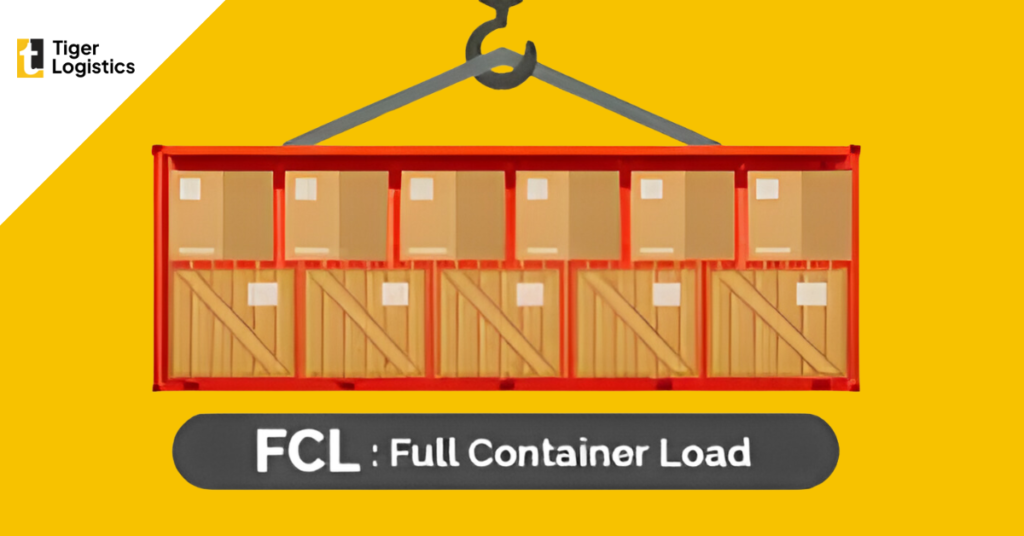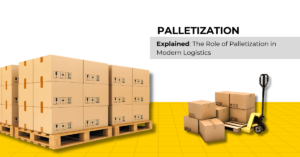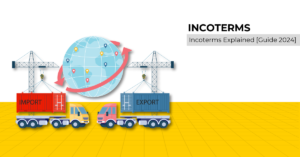
In the world of international trade and logistics, terms like FCL and LCL hold significant importance. FCL, or Full Container Load, and LCL, or Less than Container Load, represent two distinct modes of shipping goods via containers. Let’s delve deeper into these terms to understand their implications and applications in the realm of global commerce.
FCL (Full Container Load):
FCL shipping involves the reservation of an entire shipping container for the exclusive use of one shipper’s cargo. This means that the container is filled with goods belonging to a single entity, whether it’s a manufacturer, exporter, or importer. FCL shipments are typically chosen when the volume of goods to be transported is large enough to occupy an entire container, or when the shipper prefers the added security and control offered by dedicated container space.
One of the primary advantages of FCL shipping is its cost-effectiveness, especially for shipments with substantial volumes. With FCL, shippers pay a flat rate for the entire container, regardless of whether it’s fully loaded or not. This can result in significant savings, particularly for businesses with regular or bulk shipping requirements.
Moreover, FCL shipments often have shorter transit times compared to LCL. Since the container is dedicated solely to the shipper’s cargo, it undergoes loading and unloading only once, reducing the time spent in ports and terminals. This streamlined process not only speeds up delivery but also minimizes the risk of delays associated with handling multiple consignments.
Additionally, FCL offers enhanced security and protection for goods during transit. By having the container exclusively for their cargo, shippers can mitigate the risk of contamination or damage from other shipments. This is particularly beneficial for delicate or sensitive products that require special handling or storage conditions.
LCL (Less than Container Load):
In contrast to FCL, LCL shipping involves consolidating multiple shipments from different shippers into a single container. This means that the container is shared among several parties, each contributing a portion of the cargo. LCL is typically chosen when the volume of goods to be shipped is insufficient to fill an entire container or when shippers prefer to split the cost of transportation with others.
While LCL offers flexibility and cost-sharing benefits, it also comes with certain drawbacks. One of the main disadvantages is the potential for longer transit times. Since the container contains multiple consignments, it may undergo multiple loading and unloading processes at different ports or terminals, leading to delays in delivery.
Furthermore, LCL shipments are susceptible to the risk of contamination or damage from other cargoes sharing the container. This can be a concern for goods that are sensitive to external factors or require specific storage conditions to maintain their quality.
Comparison and Considerations:
When deciding between FCL and LCL shipping, several factors should be taken into consideration. These include the volume and nature of the goods being transported, budget constraints, transit time requirements, and the level of security and protection needed for the cargo.
For businesses with large volumes of goods and stringent security requirements, FCL shipping may be the preferred choice. However, for smaller shipments or those with flexible delivery timelines, LCL shipping could offer a more cost-effective solution.
Ultimately, the decision between FCL and LCL should be based on a careful assessment of the specific needs and priorities of the shipper, taking into account factors such as cost, transit time, security, and convenience.
In conclusion, FCL and LCL represent two distinct approaches to container shipping, each offering its own set of advantages and considerations. By understanding the differences between these two modes of transportation, businesses can make informed decisions to optimize their logistics operations and meet the evolving demands of global trade.
What is the meaning of 1×20 FCL?
When discussing FCL shipments, it’s common to encounter terminology such as “1×20 FCL.” This designation refers to a specific type of full container load based on the size of the container being used. In this case, “1×20” indicates that one container of a standard size, which is 20 feet in length, is being utilized for the shipment.
This means that the entire contents of the 20-foot container are allocated to a single shipper’s cargo, ensuring that the space is utilized efficiently and exclusively for their goods. The use of standardized container sizes, such as 20 feet, allows for uniformity and ease of handling across different modes of transportation, including ships, trucks, and trains.
For shippers, understanding the meaning of terms like “1×20 FCL” is essential for accurately communicating their requirements to freight forwarders and carriers. By specifying the container size and quantity needed for their shipment, shippers can ensure that their cargo is transported efficiently and securely to its destination.
Example: Suppose a clothing manufacturer in Bangladesh needs to ship a large order of garments to a distributor in the United States. If they opt for a “1×20 FCL,” it means that an entire 20-foot container will be reserved exclusively for their garments. This ensures that the clothing items are protected during transit and delivered intact to the distributor’s warehouse.
How many tons of cotton rags can load in 40′ FCL?
The capacity of a 40-foot FCL (Full Container Load) container to accommodate cotton rag depends on various factors such as the weight and volume of the cotton rag bales, as well as any regulations regarding weight limits for shipping containers.
Typically, a 40-foot FCL container can accommodate a larger volume of cargo compared to a 20-foot container due to its increased length. However, the precise weight limit may vary depending on factors such as the type of container, transportation mode, and specific requirements of the shipping line.
Example: Suppose a textile manufacturer in India needs to export cotton rag to a buyer in Europe. If they opt for a 40-foot FCL container, they can load a substantial quantity of cotton rag bales, potentially totaling several tons depending on the weight and volume of the individual bales.
In summary, terms like “1×20 FCL” and considerations regarding cargo capacity in FCL containers play a crucial role in the logistics and shipping industry. By understanding these concepts and their implications, shippers can make informed decisions to optimize their supply chain operations and ensure the efficient transportation of goods worldwide. For more useful insights checkout our recent Blogs!
The Importance of Container Load Calculations
When determining the quantity of goods that can be loaded into a container, accurate calculations are essential to ensure compliance with weight restrictions and maximize cargo capacity. Factors such as the weight, volume, and dimensions of the cargo must be carefully considered to avoid overloading the container and compromising safety during transportation.
For example, when shipping cotton rags in a 40-foot FCL container, the weight of each bale must be taken into account to determine the total weight that can be safely accommodated. Additionally, considerations such as the stacking height and distribution of the cargo within the container play a crucial role in optimizing space utilization and maintaining stability during transit. Checkout our digital platform to get instant rates Freightjar.
Furthermore, adherence to weight limits is critical to comply with international regulations and prevent potential fines or penalties for exceeding permissible loads. By conducting thorough load calculations and adhering to established guidelines, shippers can minimize the risk of accidents, damage to goods, and disruptions to the supply chain.
In conclusion, understanding the implications of container load calculations and adhering to weight restrictions are essential aspects of efficient and safe cargo transportation. By leveraging accurate data and adopting best practices in load planning and optimization, shippers can streamline their operations, enhance cargo security, and ensure the timely delivery of goods to their destination. Still feeling overwhelmed and don’t know whom to trust Request a Callback from our Expert !








1 thought on “What is FCL/LCL in shipping terms?”
Wonderful insights on FCL & LCL. This is very essentail for SMEs and MSMEs in India to know which container type to choose. Sometimes to avoid risk we use FCL and sometimes LCL would do the cost optimisation.